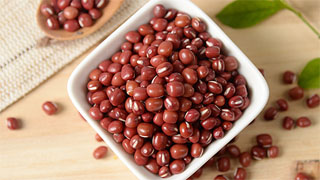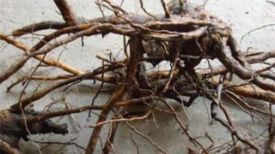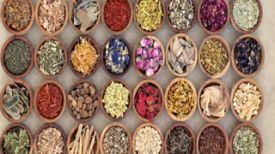
1. Aliases
Red beans, red adzuki beans, vermilion adzuki beans, adzuki beans, red beans, pig liver red, red adzuki beans, small red mung beans, lice roasted beans, vermilion adzuki beans, golden adzuki beans, Maochai red, and rice adzuki beans.2. Plant morphology
Annual upright herbaceous plant, or upper part entwined. When young, it is covered with fine hairs, but when old, it is hairless. 3 compound leaves; Stipules lanceolate or ovate lanceolate; Small leaves are papery, lanceolate, oblong lanceolate, or ovate to broadly ovate, sometimes slightly rhombic in shape, apex gradually acute or acute, base wide triangular, nearly circular or nearly truncate, sometimes lateral leaflets are oblique, entire, hairless on both sides or only sparsely hairy on leaf veins, with 3 basal veins. Racemes axillary, with several to many flowers; Bracteoles 2, hairy; Calyx light green, short bell shaped, calyx teeth 5; Corolla butterfly shaped, yellow, flag petal round kidney shaped, apex slightly concave, base heart-shaped, wing petal obliquely ovate, base with gradually narrowed claws, keel petal narrow, apex elongated into a beak shape, spiral curled; The ovary is superior and densely covered with short hard hairs. Narrow fruit slender, linear and flattened, usually curved and sickle shaped, with a beak at the tip. The seeds are oval shaped, narrow, dark red, and rarely brown, black, or grass yellow, with a sunken hilum. The flowering period is from May to August, and the fruiting period is from August to September.
3. Origin distribution
Cultivated, there are also wild species. Distributed in Guangdong, Guangxi and other areas, it is widely planted in various provinces in southern China.
4. Harvesting and processing
When the pods are ripe but not yet cracked in autumn, the entire plant is pulled out, sun dried, seeds are planted, impurities are removed, and then sun dried.
5. Characteristics of medicinal herbs
Red beans are elongated and slightly flattened. The surface is purple red, dull or slightly glossy, with a linear protruding hilum on one side, leaning towards one end, white, and a concave longitudinal groove in the middle. There is an inconspicuous ridge on the other side. Hard in texture and not easily broken. Cotyledons are milky white. Odorless, slightly sweet in taste.
6. Nature, taste, and meridian tropism
Sweet, sour, and mild in nature. Guixin Meridian and Small Intestine Meridian.
7. Effect and function
Promote diuresis, reduce swelling, detoxify and discharge pus. It belongs to the category of diuretic and anti-inflammatory drugs under the category of diuretic and dampness reducing drugs.
8. Clinical applications
Dosage of 9-30 grams, decoct and take; Apply an appropriate amount externally, grind and adjust. Red bean is mainly used to treat edema and fullness, athlete's foot and limb swelling, jaundice and red urine, rheumatism and heat obstruction, carbuncle and sores, and abdominal pain.
9. Pharmacological research
Inhibiting trypsin. 20% Red Bean Decoction has inhibitory effects and effects on Staphylococcus aureus and Shigella flexneri, as well as enhancing cellular immunity and contraception.
10. Chemical composition
Red bean contains sugars and triterpenoid saponins. It also contains ingredients such as 3-furanmethanol-p-D-glucopyranoside, adzuoside I-VI, proanthocyanidin Bi, proanthocyanidin B3, D-catechin, D-epicatechin, niacin, riboflavin, etc.
11. Taboos for use
Patients with Yin deficiency and Jin injury should take it with caution. Overdose can penetrate and benefit the injured Jin.
12. Compatibility prescription
1. Initial treatment for gangrene: Apply red bean powder with vinegar and it will also disappear. (Xiaopin Fang)
2. Treatment for mumps, carbuncles, and sores: Red beans are fine powder, and fresh water is used to apply to the upper and four sides of the sore. If the red swelling is dry, it is reapplied. (Guidelines for Diagnosis and Treatment)
3. Treatment of cheek heat and swelling: Apply red bean powder and honey, it will disappear overnight; Adding hibiscus leaves at the end is particularly wonderful. (Compendium of Principles)
4. Treatment for pediatric heavy tongue: Red bean powder, vinegar, and apply on the tongue. (Qian Jin Yao Fang)
5. Treatment for milk retention: Boil red beans, take the juice and drink immediately. (Wang Yue's Book of Production)
The content of the article is for clinical reference only. Non professionals in traditional Chinese medicine are not allowed to try medication.


